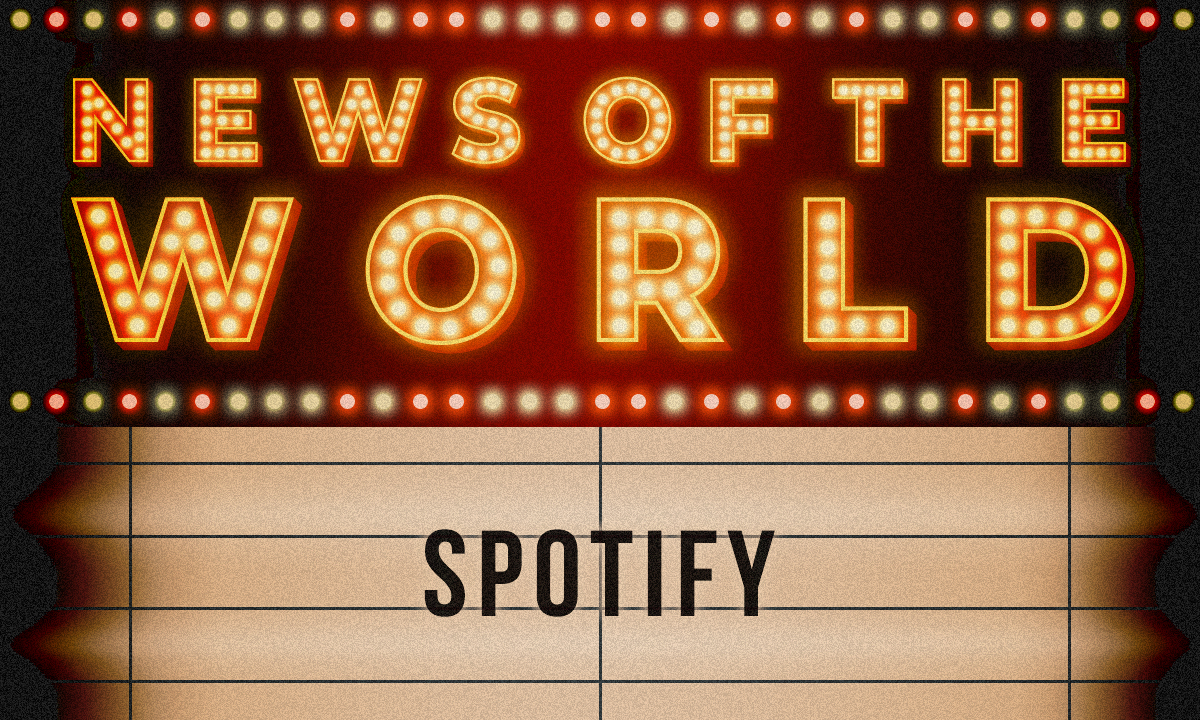
NoW
[NoW] Spotify is coming
And with it Lorem, the playlist for Gen Z
2020.12.31
Spotify recently announced its plans to officially enter the Korean market. Many people are eager to experience its well-regarded personalized music recommendations and diverse playlist generators domestically. The Spotify app is already available in Korean. Streaming services in general are actually quite simple. Spotify is no different from other Korean music streaming services when it comes to the basic services provided such as allowing users to listen to music whenever and wherever they like. Local music consumers’ hopes are more than just ill-defined expectations for another overseas service, however. Korean streaming services boast a very long history by global standards; however, outside of the change of media that freed listeners from the constraints of physical albums and MP3s, little comes to mind when thinking what, if any, cultural influence they have had on music.
That’s why we need to talk about Lorem, one of the many playlists in Spotify’s catalog. It’s difficult to define Lorem in one word: It doesn’t fit in with any of the standard classifications typical of streaming service playlists, such as new releases, genre, mood, activity, or by decade. When Lorem first appeared in 2019, it bore the description, “Music that breaks the rules, just a little bit.” So is it there to introduce indie or other non mainstream music? Or maybe aimed at discovering new artists? True, Lorem paid attention to both Billie Eilish and Clairo in their early days, and took notice of beabadoobee after that. But stars like Harry Styles, Childish Gambino and Tyler, the Creator show up on Lorem quite a bit, too.
Then two keywords come to mind for Lorem: Generation Z, and genre-free. “Mood” by 24kGoldn and iann dior is just one song that found renewed life as a megahit thanks to the playlist. Gen Z is generally thought to include those born between the mid-1990s and the early to mid-2010s. To members of Gen Z, to whom the Internet, phones and YouTube are essential tools and whose attention wanders endlessly between media and irrelevant information, genre is meaningless. Spotify realized that the personalized music recommendations that made them famous were not very different from the days of old when people had a similar idea for radio. It’s somewhat ironic, but the way AI goes about creating traditional playlists is based on genre, style, and mood: that is, it chooses to recommend songs similar in genre, style, and mood to those the listener plays often, marks as favorites, or adds to playlists.
Lorem takes the opposite approach. A real person looks at one specific generation of listeners, its artists and their context within that community, and with that molds a musical taste. Of course, Lorem is far from the only playlist to be curated by hand. However, curators of other playlists have not become famous, nor are they giving countless interviews to the media about the background to their music selection process. Moreover, while listeners follow other playlists they like, they don’t get into public discussions about how those other playlists convey their feelings and the feelings of their generation. Lorem fans are fans of the playlist itself, not of any particular artist or kind of music. All this could only happen with Lorem.
That’s why we need to talk about Lorem, one of the many playlists in Spotify’s catalog. It’s difficult to define Lorem in one word: It doesn’t fit in with any of the standard classifications typical of streaming service playlists, such as new releases, genre, mood, activity, or by decade. When Lorem first appeared in 2019, it bore the description, “Music that breaks the rules, just a little bit.” So is it there to introduce indie or other non mainstream music? Or maybe aimed at discovering new artists? True, Lorem paid attention to both Billie Eilish and Clairo in their early days, and took notice of beabadoobee after that. But stars like Harry Styles, Childish Gambino and Tyler, the Creator show up on Lorem quite a bit, too.
Then two keywords come to mind for Lorem: Generation Z, and genre-free. “Mood” by 24kGoldn and iann dior is just one song that found renewed life as a megahit thanks to the playlist. Gen Z is generally thought to include those born between the mid-1990s and the early to mid-2010s. To members of Gen Z, to whom the Internet, phones and YouTube are essential tools and whose attention wanders endlessly between media and irrelevant information, genre is meaningless. Spotify realized that the personalized music recommendations that made them famous were not very different from the days of old when people had a similar idea for radio. It’s somewhat ironic, but the way AI goes about creating traditional playlists is based on genre, style, and mood: that is, it chooses to recommend songs similar in genre, style, and mood to those the listener plays often, marks as favorites, or adds to playlists.
Lorem takes the opposite approach. A real person looks at one specific generation of listeners, its artists and their context within that community, and with that molds a musical taste. Of course, Lorem is far from the only playlist to be curated by hand. However, curators of other playlists have not become famous, nor are they giving countless interviews to the media about the background to their music selection process. Moreover, while listeners follow other playlists they like, they don’t get into public discussions about how those other playlists convey their feelings and the feelings of their generation. Lorem fans are fans of the playlist itself, not of any particular artist or kind of music. All this could only happen with Lorem.
TRIVIA
Spotify
The world’s most popular music streaming service. As of June, the number of users reached 299 million globally, with 138 million paid subscribers among them. Predictions for a ripple effect that could be caused by its entry into the Korean market are mixed. Some refer to the crisis Netflix stirred up for domestic services in the film and drama market after it landed in Korea. Others point out that the music and streaming market is different from the video/OTT (over-the-top, i.e. via the Internet) market, and also that Apple Music’s entry into Korea has had little impact.
Spotify
The world’s most popular music streaming service. As of June, the number of users reached 299 million globally, with 138 million paid subscribers among them. Predictions for a ripple effect that could be caused by its entry into the Korean market are mixed. Some refer to the crisis Netflix stirred up for domestic services in the film and drama market after it landed in Korea. Others point out that the music and streaming market is different from the video/OTT (over-the-top, i.e. via the Internet) market, and also that Apple Music’s entry into Korea has had little impact.
Article. Seongdeok Seo(Music Critic)
Design. Yurim Jeon
Copyright © Weverse Magazine. All rights reserved.
Unauthorized reproduction and distribution prohibited.
Unauthorized reproduction and distribution prohibited.
Read More
- [NoW] “Mood”, the hit song of the era2020.12.04
